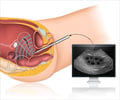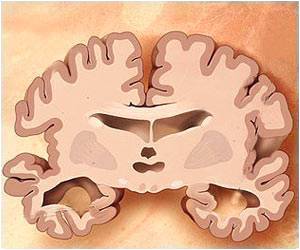Low-intensity ultrasound technology called transcranial-focused ultrasound (TFUS) can ultimately improve mindfulness.

‘Just five minutes of stimulation using low-intensity ultrasound technology is enough to boost mindfulness. #mindfulness #Daydreaming #UltrasoundTechnology’





In a new study published in Frontiers of Human Neuroscience, University of Arizona researchers used low-intensity ultrasound technology to noninvasively alter a brain region associated with activities such as daydreaming, recalling memories and envisioning the future. They found that the technique can ultimately enhance mindfulness, marking a major advancement in the field of neuroscience (1✔ ✔Trusted SourceTranscranial focused ultrasound to the posterior cingulate cortex modulates default mode network and subjective experience: an fMRI pilot study
Go to source).
Enhancing Mindfulness with Transcranial-Focused Ultrasound Technology
The researchers used low-intensity ultrasound technology called transcranial-focused ultrasound or, TFUS, to alter the default mode network of the brain, a system of connected brain areas that are especially active during activities like daydreaming."We are the first to show that the default mode network can be directly targeted and noninvasively modulated," said lead study author Brian Lord, a postdoctoral researcher in the U of A Department of Psychology.
One area of the default mode network, the posterior cingulate cortex, has been implicated as a major player in how the mind grasps onto experiences, said Lord, who is part of the Science Enhanced Mindfulness Lab, or SEMA Lab, at the university's Center for Consciousness Studies. The default mode network is active when people engage in introspection or let their minds wander, perhaps embedding themselves in a story, recalling past memories or planning future scenarios.
"This is how we form narratives about ourselves," Lord said.
Advertisement
To enhance mindfulness and help people engage more with the current moment, Lord's team used TFUS, a tool that can stimulate specific areas of the brain noninvasively with millimeter precision.
The experiment involved 30 participants who received TFUS to the posterior cingulate cortex of the default mode network of the brain. Researchers used functional magnetic resonance imaging, or fMRI, to observe changes in brain activity. Participants were asked to report their feelings and experiences before and after the TFUS treatment.
How Effective is TFUS Compared to other Neuroimaging Techniques?
The study found that TFUS reduced the brain's connectivity within the default mode network and affected participants' mindfulness and subjective experiences, such as their sense of self and perception of time."The best part is you are using a minimal amount of energy to alter brain activity. You are just giving a gentle push to the brain with low-intensity ultrasound," Lord said.
The ability to target and alter brain networks opens the possibility of using TFUS for precision therapeutics, which are medical treatments tailored specifically to an individual's unique characteristics, such as their genetic makeup, lifestyle and environment. TFUS could also potentially be used to treat mood disorders like depression and anxiety, a possibility other research groups are now exploring, Lord said.
"Unlike neuroimaging techniques where you can only make correlations with brain activity, noninvasive stimulation tools like TFUS allow you to probe the brain and develop causal models," Lord said. "That's a really powerful thing for the whole field of neuroscience."
References:
- Transcranial focused ultrasound to the posterior cingulate cortex modulates default mode network and subjective experience: an fMRI pilot study - (https://www.frontiersin.org/journals/human-neuroscience/articles/10.3389/fnhum.2024.1392199/full)
Source-Eurekalert















